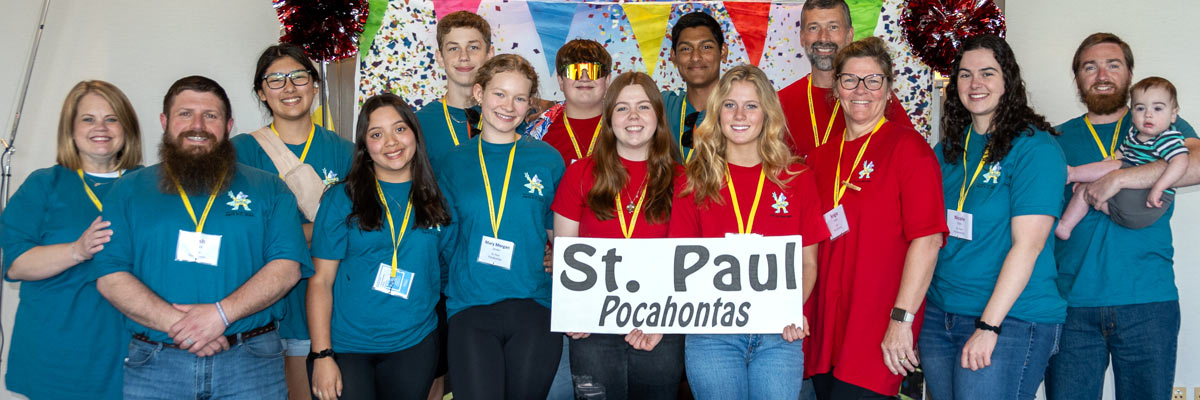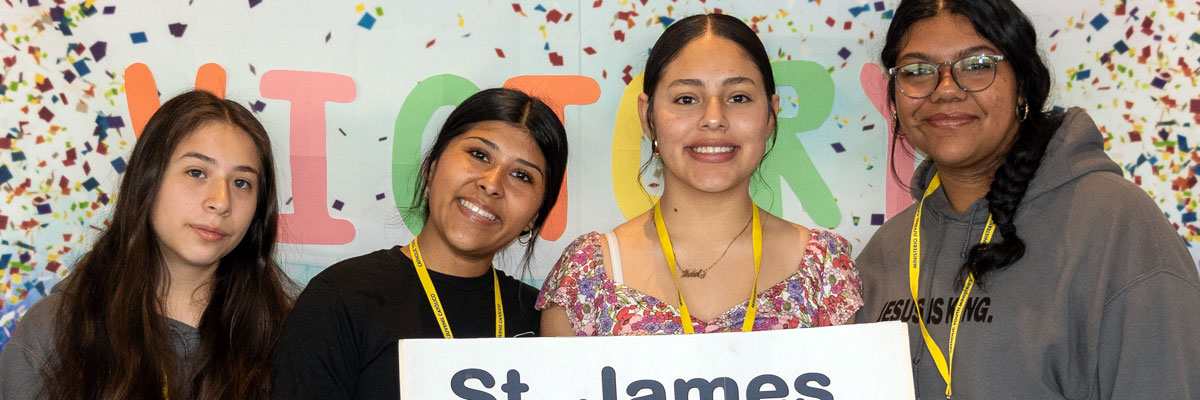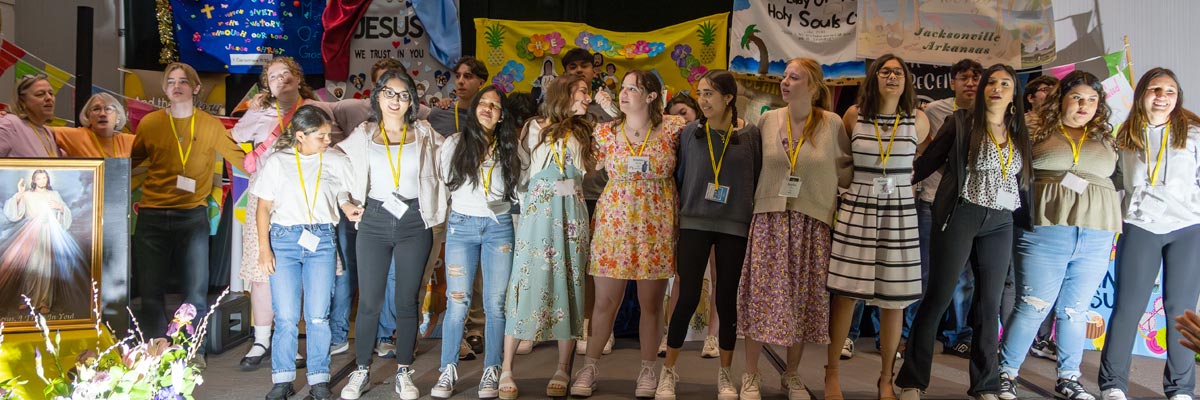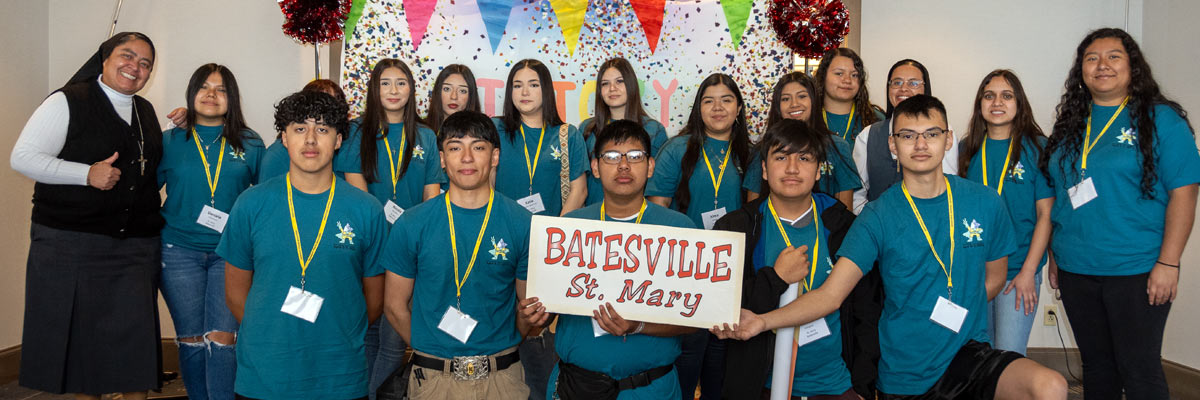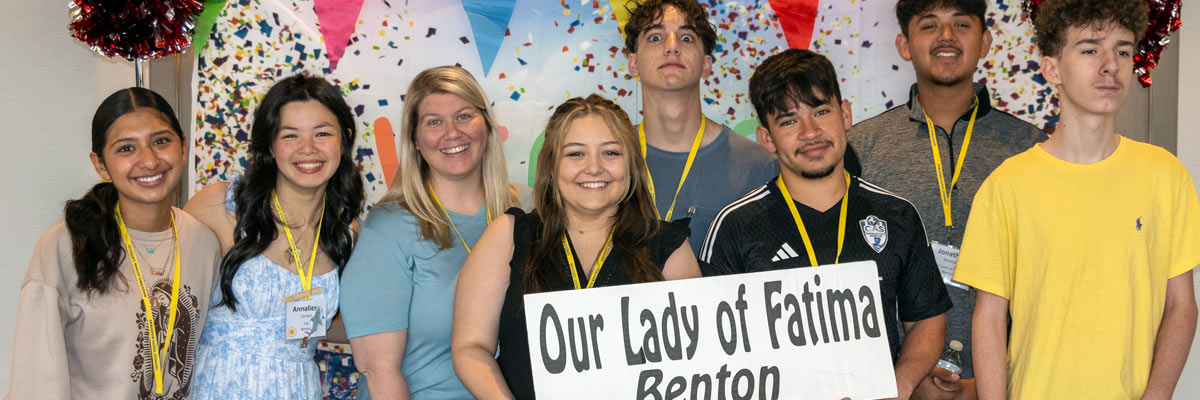Official Website of the
Catholic Diocese of Little Rock
Feast of Our Lady of Guadalupe 2014
Published: December 12, 2014
Bishop Anthony B. Taylor preached the following homily at St. John the Baptist Church in Hot Springs on Friday, Dec. 12, 2014.
Download MP3 file to your device

Bishop Taylor
The Spaniards who discovered America were brutal conquerors. They robbed the Indians of their gold and silver, took away their dignity and freedom, and destroyed their culture. They enslaved many Indians and many died of diseases brought by the colonists. The Indians lived in a situation of poverty, despair and fear.
But not everything was black. Among the conquerors and colonists were some missionaries, and they tried to evangelize the people of Mexico. But due to their negative experience of the Christians they knew, the indigenous people could not believe in the Christian God — the God who seemed to be on the side of their oppressors. But there were a few exceptions, among whom was an Aztec named Juan Diego Cuautlatoatzin.
Juan Diego was very devout. Daily he walked 10 miles to Mexico City to go to Mass. And one day, when he was climbing a hill named Tepeyac (in Spanish, Guadalupe) a beautiful dark-complected woman appeared to him and spoke to him in Nahuatl, the Aztec language. She sent Juan Diego to the bishop to ask him to build a church there in her honor. So, full of faith, Juan Diego went to the bishop, Fray Juan de Zumarraga, but the bishop didn't believe him.
And it was by means of her love and her identification with them that the people of Mexico came to understand and accept the faith. And this is the miracle of Guadalupe.
On the way back home, the dark-skinned woman appeared to Juan Diego again to send him to go to the bishop a second time. But the bishop didn't believe him this time either, and instead asked him bring him proof, a sign from the virgin. The next day Mary appeared to him a third time on the hill of Tepeyac. Juan Diego told her that the bishop wanted a sign. Mary told him to return the next day and she would give him the proof that the bishop wanted.
But this day, since his uncle Juan Bernardino was gravely ill, Juan Diego went to get a priest to anoint his uncle. But even though he missed his appointment with the virgin, she appeared to him. She told him not to worry about his uncle, that she would cure him. When Juan Diego asked her for the sign for the bishop, she told him to climb the hill of Tepeyac, where he would find some roses — he should cut them, gather them together and bring them to her.
He found everything just as she had said, and even though it was winter in the mountains and there was frost on the ground, the flowers were fresh, fragrant and completely impossible that time of the year. Then Mary told him to bring them to the bishop in his tilma, his serape. When he finally had his meeting with the bishop, Juan Diego opened his serape to let the roses fall to the ground as the sign that he had requested.
But, astonishingly, on the serape itself was an even greater miracle: the image of the dark-skinned virgin painted on the tilma itself — it was impossible that Juan Diego could have made this painting, which science cannot explain — and which after four-and-a-half centuries still has not faded. The bishop believed this sign and had the church built that Mary requested.
But there is another, bigger miracle of Guadalupe. What is it? In Mary the humble, afflicted people found a mother who understands their oppressed condition because she shares it, a mother who gives herself preferentially to the poorest and most afflicted of her children. She appeared with the dark face and spoke the language of the desperate people of her time.
And it was by means of her love and her identification with them that the people of Mexico came to understand and accept the faith. And this is the miracle of Guadalupe. The evangelization of Mexico and the Americas is the principal miracle of Guadalupe. Mary, who took on herself the condition of the poor, is the greatest evangelist in all of the history of the world.
We have received this same faith and this same call to be evangelists ourselves. And Mary and Jesus show us how best to bring the Good News to others. They identify with them. They have a preferential love for the poor. You and I cannot change the color of our face, but we can change our heart. If Mary has identified herself with us, why can't we identify ourselves with our needy brothers and sisters? If we do so, the miracle of Guadalupe will continue to save — even today!


